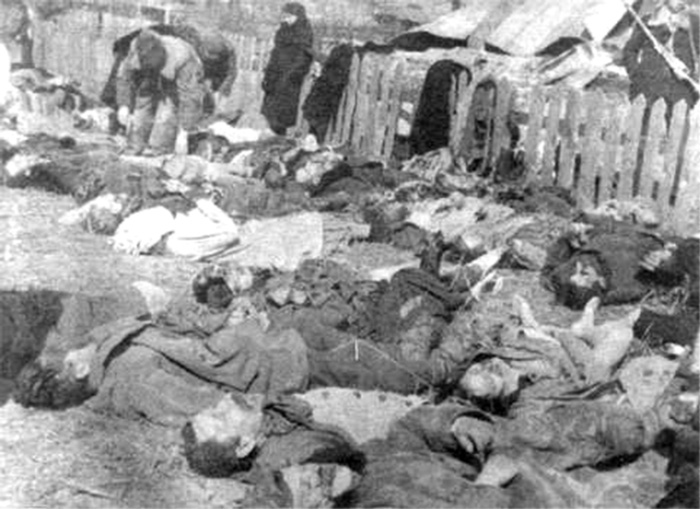On Sunday, 11 July 1943, units of the Ukrainian Insurgent Army (UPA) carried out a massive action against the Polish inhabitants of 150 villages in Volhynia. It is assumed that at least 100,000 Poles were victims of the Volhynian Massacre, a genocide committed by the UPA with the participation of the local Ukrainian population.
In 1941, following Germany’s aggression against its recent ally the Soviet Union, part of the territory of pre-war Poland, which had been under Soviet occupation from 1939 to 1941, was occupied by the Third Reich. The new German occupation had high expectations for Ukrainian nationalists, who hoped for the creation of a Ukrainian state. Hence, it was not uncommon for Ukrainians to serve in the ranks of the police or even to form their own SS unit, the 14th SS Division “Galizien”.
The perpetration of the Volhynian crimes must be attributed to the Organisation of Ukrainian Nationalists – Stepan Bandera’s faction and the UPA subordinated to it, with the often participation of the local Ukrainian civilian population. The first mass murder took place in the village of Parosla on 9 February 1943. They were intensified after the facts of the mass desertion of armed Ukrainian policemen and their joining the ranks of the Ukrainian Insurgent Army. Many of them had previously participated in the extermination of Jews.
On Good Friday, 23 April 1943, the Ukrainian Insurgent Army (UPA) murdered 600 Poles in Janowa Dolina, a settlement established between the wars near a basalt mine. The greatest intensity of the crimes occurred on Sunday 11 July 1943, when 150 villages inhabited by Polish people were attacked. The date was not chosen by accident, as the fact that people were gathered for services in churches was exploited. Murders took place in the temples of Kisielin, Poryck and many other localities. On that day, some 10,000 people were murdered, often in a cruel manner. The total number of Polish victims of Ukrainian nationalists amounts to more than 100 thousand. Not only Poles perished at their hands, among the murdered were also Jews who were hiding, as well as Dutch and Czechs who had lived here for decades. The victims were also Ukrainians from mixed marriages, or those who refused to take part in the crime and saved their Polish neighbours.





